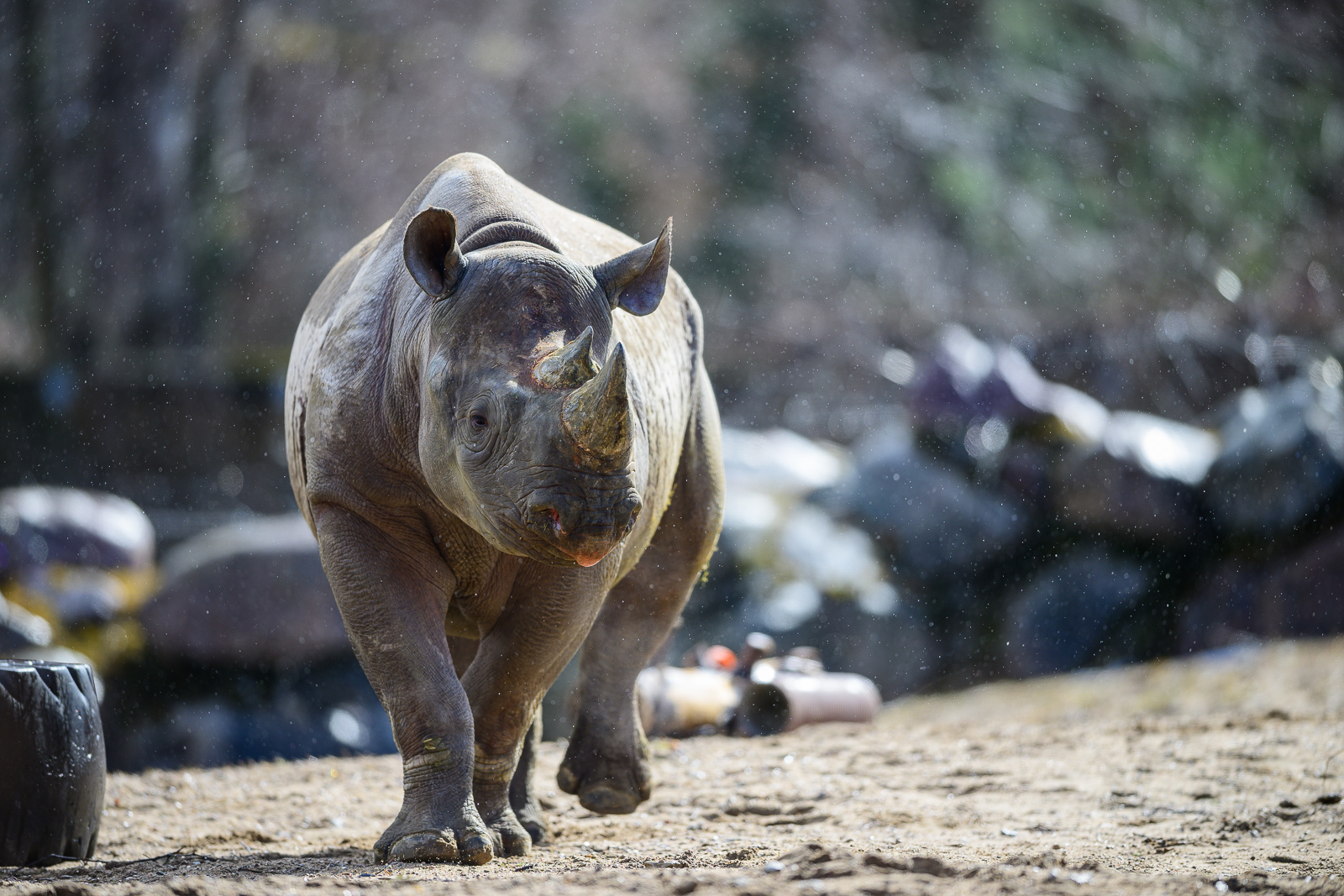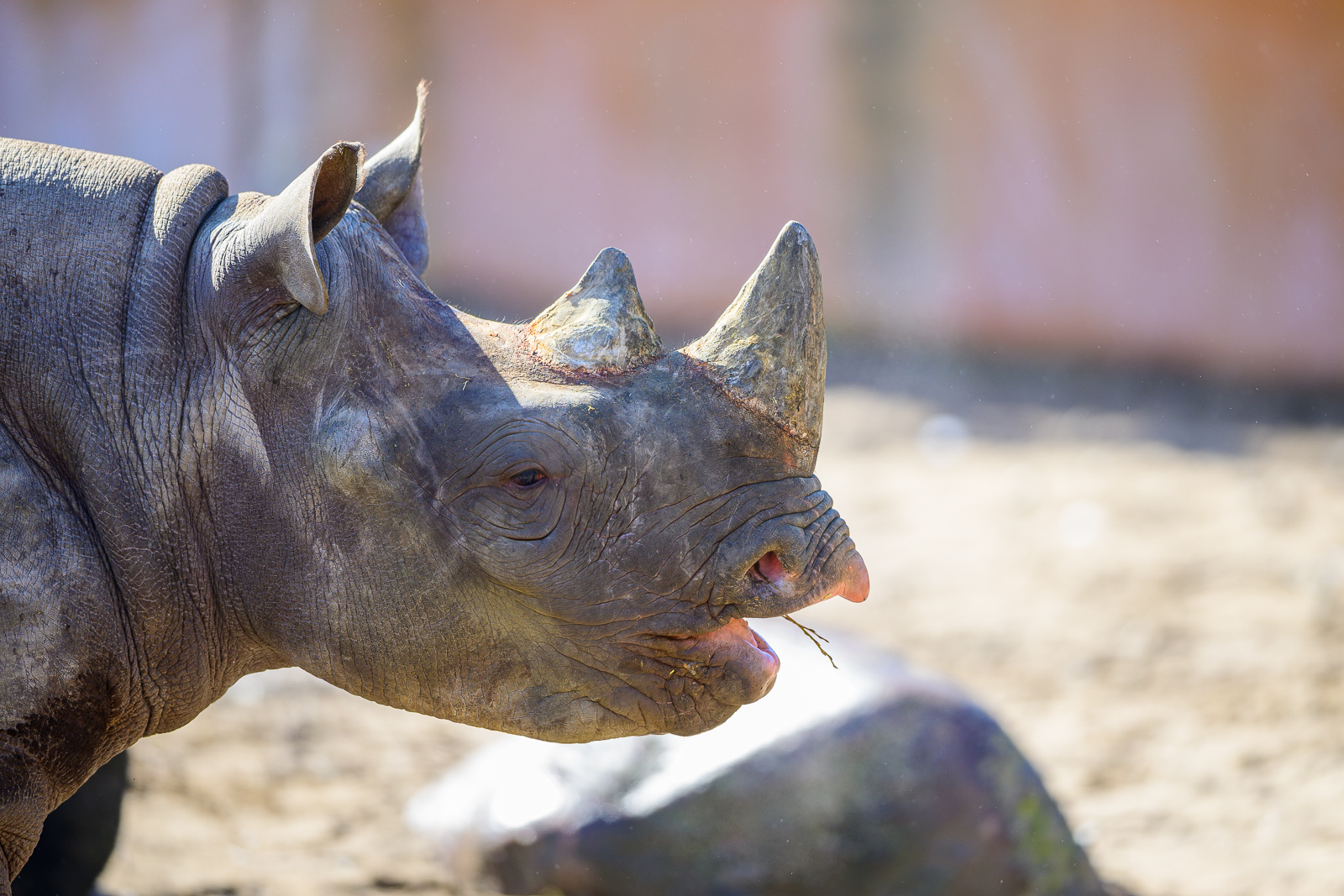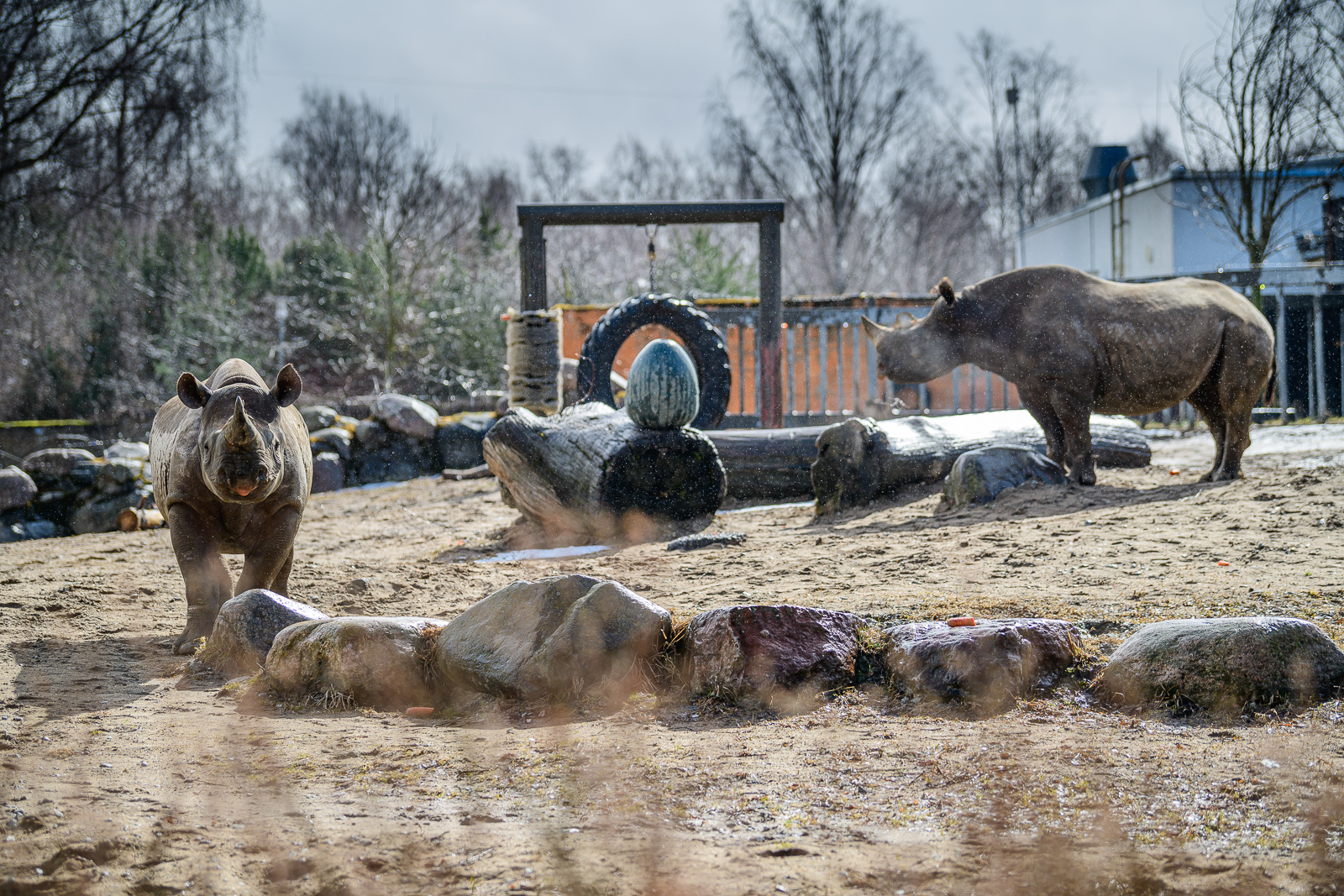Eastern black rhino
Diceros bicornis michaeli

Critically endangered
Increasing
- Vertebrate
- Phylum: Keelikloomad
- Class: Imetajad
- Order: Kabjalised
- Family: Ninasarviklased
Activity
videviku
Sociability
seltsinguline
Nutrition
puulehed ja võrsed
Size and weight
kehapikkus 340 cm, õlakõrgus 160 cm, sabapikkus 70 cm, kaal 1100 kg
Life expectancy
40 aastat
The black rhinoceros live in various habitats that range from dry desert areas to moist woodlands. It prefers sparse forest and savannas with acacia scrub and thickets.
Using its pointed and prehensile upper lip, the black rhino feeds on leaves, twigs and shoots. It also regularly visits salt licks. The rhino generally stays within 25 kilometers of a water source, but it can live up to 5 days without drinking if its diet contains succulent plants. To avoid the heat and flies, the rhino wallows in mud holes and spends hours resting in shallow water. It marks its territory by spraying urine and scattering droppings with its hind legs. The black rhino has a keen sense of smell and it can run at 50 km/h.
The front horn averages 50 cm long, in females it is often longer, up to 140 cm.
As regards the social system of black rhinos, there seem to be clans of animals that are known to one another. Temporary aggregations of smaller groups of individuals have been observed. Adult males usually are solitary but occasionally gather in groups feeding together.









